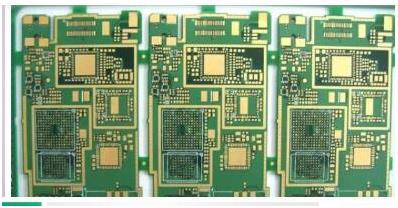In the future of the 5G mobile phone era, in addition to a new wave of replacements, 5G mobile phones will have any new demand for printed circuit boards. With 5G high-frequency, high-speed, and heat dissipation requirements, there will be a need for hard boards. FPC or materials can create new output value contribution. With the Chinese mobile phone manufacturers ZTE and Huawei officially announced in August that the first 5G mobile phone will be officially launched, 5G mobile phones will also bring new products to the printed circuit board market. chance.
5G mobile phones will be launched in 2020, which will account for 7% of smartphones in 2020
According to Gartner, the market research center, sales of 5G smartphones will still be a minority in 2019, and the overall market will not start to climb until the second half of 2020. In 2019, sales of 5G smartphones will exceed 15 million, which will only account for the total number of smartphones in 2019. The sales volume of mobile phones is less than 1%, and it has begun to lay out the first batch of 5G smartphones, including LG V50 ThinQ, OPPO Reno 5G, Samsung Galaxy S10 5G and Xiaomi Mi MIX 3 5G.

In addition, analysts predict that the first Apple iPhone model that supports 5G functions will come out in 2020, which should attract iPhone users to upgrade.
IDC estimates that the shipment of 5G mobile phones in 2020 will reach 7% of the total shipments of smart phones (approximately 212 million), and will account for 18% by 2022.
5G mobile phones increase new demand for soft boards
With the advent of 5G mobile phones, the most direct contribution to the printed circuit board industry is the FPC industry. They need to increase the demand for mobile phone antenna FPC. This year’s iPhone is considered a pre 5G model, and the mobile phone must be downgraded to the frequency band below 10GHz. Last year’s production and supply side had bottlenecked LCP (Liquid Crystal Polymer) materials. This year’s iPhone mobile phone antenna soft board material adopts MPI (Modified Polyimide), which has a lower cost and does not lose LCP materials in the 4G/LTE frequency band. ) Is the main material, and the main suppliers are Zhending-KY and Taijun.
On the other hand, because the design of the new antenna soft board is more complicated and the integration is high, the ASP is generally improved, which will help the manufacturer's gross profit margin.
But this does not mean that MPI material is the mainstream of future mobile phone materials. When LCP solves the production problem, because LCP has good hygroscopicity and has better performance in the frequency band above 10GHz, the main current material supply problems and the production process To solve the problem of easy fragility, most industry players are still optimistic about the role of LCP in the future of 5G antenna soft boards. At present, most industry players are also conducting research on MPI, LCP and even other new materials to avoid missing business opportunities.
Carrier-like penetration rate is expected to increase due to 5G mobile phones
In addition to the fact that the soft board is directly due to the increase in demand for 5G mobile phones, it is also possible that the penetration rate of the 5G mobile phone era will increase in the part of the carrier-like board. 5G smart phones consume a lot of power, and the biggest advantage of similar carrier boards is that the line width and line spacing are reduced, which can save space in the phone and increase the battery capacity. In the era of 5G mobile phones, the demand for power consumption is even greater. Under the circumstance, the design of the class carrier board will have its advantages.
The class carrier board has been introduced into Apple related devices since 2017, including iWatch, iPhone, etc., and then Samsung has also begun to adopt related technologies, and the Chinese factory finally followed up. Currently, high-end models including Huawei have also begun to import class carriers. The advent of 5G mobile phones is expected to further drive the consumption of similar carrier boards.
The 5G mobile phone era is here, and it is an opportunity and challenge for the PCB industry